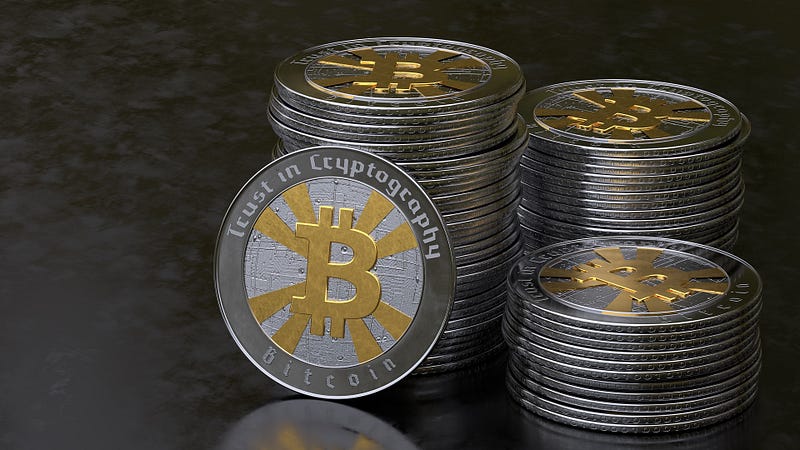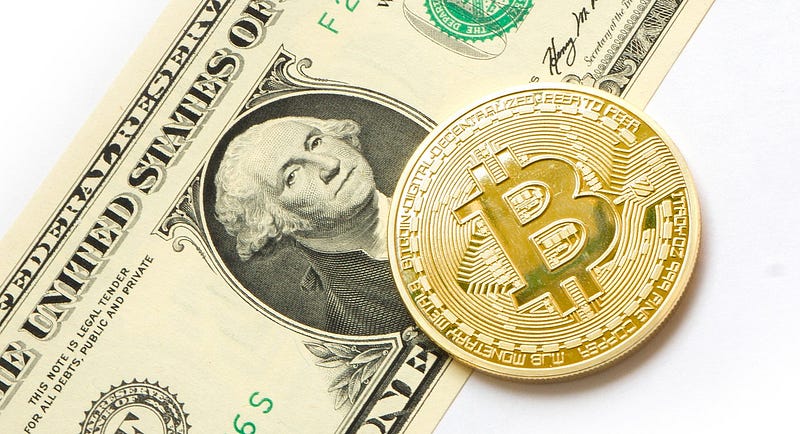Everything you need to know about the biggest Cryptocurrency, Bitcoin.
Depending on where you currently reside in, Bitcoin may be associated with positive or negative terms. What is hard to deny though, is that you have probably heard of the term Bitcoin at least once.
Despite the many criticisms directed at Bitcoin, most notably from Warren Buffett and Jamie Dimon, Bitcoin is still very much alive and in its infancy.
What exactly is Bitcoin? How is Bitcoin valued? Why should you be interested in Bitcoin? How do you get started? We explain all this and more with this guide. Keep reading till the end!
What Is Bitcoin?
Even up till now, after 10 plus years of Bitcoin’s (BTC) existence, there has not been (in my opinion) a simple and clear explanation of what Bitcoin actually is. The developers will focus on the Blockchain technology powering the Bitcoin network, experts from the traditional financial industry will say it is a scam and the common man will see BTC as a way to make huge profits.
And they are probably right in their own way.
What asset class does Bitcoin belong to?
For the first time in history, we have something that is between a currency and an asset class. BTC is accepted or going to be accepted by many merchants as a method of payment, from small retail stores to big wholesalers such as Whole foods and Starbucks.
At the same time, it is also the best performing asset in recent times, giving investors the highest rate of return compared to other commodities like oil and gold.
This is confusing for many, especially for people in the traditional finance industry who are used to categorizing assets into specific pigeon holes.
Blockchain and Bitcoin
To add to the confusion, the underlying Blockchain technology of the Bitcoin network is a new technology that has not been heard of by many until the bull run in late 2017.
Decentralization is a key component of Blockchain technology, with no central authority controlling the ledger within the network. Each node can be thought of as mini servers with the main purpose of securing the network by holding the same ledger of transactions.
A successful attack on the Bitcoin network requires the attacker to control 51% of the nodes. With electricity consumption from Bitcoin mining exceeding the total electricity consumption of Singapore, an attacker will need this level of electrical input to be successful in their attack on the network.
In other words, it is very unlikely for BTC to be hacked.
When Did Bitcoin Start?



Bitcoin was first released in January 2009, when the world economy was still feeling the effects of the 2008 financial crisis. Satoshi Nakamoto, an unknown person or group developed the software. Power held by central banks led to corruption and a lack of checks and balances to curb this corruption led to the financial crisis.
Satoshi then introduced BTC as a peer-to-peer currency where users had total control of their BTC and there was no central authority controlling this currency. The timing of its introduction was by no means a coincidence.
How Many Bitcoins Are There?
For each new block produced on the Bitcoin network, new Bitcoins are released to reward the miners who produced the block. Bitcoins will be continually released in this form until a total supply of 21 Million BTC has been released to the world.
While the supply of BTC is limited when compared to the total supply of fiat currencies in the world, BTC still has the potential to be the global currency used by the world. This is because one BTC can be divided down to eight decimal places.
This high level of divisibility ensures that Bitcoin can still be used in micro transactions even if the price of BTC rises tremendously. There are currently 17.7 Million BTC in circulation as of May 2019.
How Much Is A Bitcoin?



The price of BTC has been and continues to be the main focus when discussing Bitcoin. Heavy speculation has certainly affected the price, but there are still factors that point to the intrinsic value of BTC.
These factors are what differentiates BTC from other Cryptocurrencies looking to usurp its position.
Level Of Acceptance As A Payment Method
Demand for BTC as a method of payment in stores and companies will drive the intrinsic value of BTC. With higher demand and a fixed supply, BTC will become more valuable over time as more stores accept it.
The Longest Chain
To successfully hack the Bitcoin network the hacker needs to produce past transactions since the start of the Blockchain. He will then need to fight to be the longest chain, as nodes will automatically take the longest chain as the legitimate chain.
As the network in operation for the longest time, the Bitcoin network has the longest chain in the market, giving it the most value in this aspect. In addition, the amount of mining power put into BTC is the highest out of all Cryptocurrencies.
To hack the Bitcoin network will require an obscene amount of resources and is one factor that makes it valuable.
Participation From Institutional Investors



Money from Wall Street has been a point of contention, as it is ironic that Bitcoin, a currency meant to replace the function of central banks, will increase in value from the participation of institutional investors.
Putting ideological differences aside, it can be argued that the acceptance of Bitcoin as an asset class by institutional investors is positive for the space.
Firstly, participation from institutional investors sends a clear signal to retail investors that are still on the fence regarding BTC – This is a legitimate asset class.
Secondly, institutional investors are only likely to invest in an asset if there is enough clarity surrounding regulation. As much as many ideologists see BTC as a way to replace governments, no individual and entity can escape from regulation. The earlier BTC receives regulatory clarity, the greater is its value as an asset class.
Where To Get Bitcoin?



In this day and age, purchasing BTC has been easier than ever. The more common options you will hear of would be to buy Bitcoin with your credit card, using the Bitcoin ATMs in your country and if you are a big trader, to buy Bitcoin over-the-counter (OTC)
Unless you are a retail investor who has the technical know-how, BTC mining is unlikely to be a profitable option for you. This is due to the pooling of computing power required for BTC mining to be profitable.
Choosing the best option for yourself is highly dependent on the amount of BTC you are looking to buy and how important convenience is for you. We have created a simple guide for how you can buy BTC in 2019. Read it here.
Bitcoin Significant Milestones
Ten years on, Bitcoin has achieved numerous milestones for it to reach its current position of strength. These are a few significant milestones of BTC to date
- $140 Billion Market Capitalization
- More than 38 Million Blockchain wallet users (as of April 2019)
- The Bitcoin Blockchain reaching 210 GB in size (as of April 2019)
- Approximately 415 Billion Bitcoin transactions (as of May 2019)
- Adoption of Bitcoin by major players such as Overstock, Microsoft, Expedia and Namecheap
While the past ten years have brought about significant steps towards mass adoption of BTC, the next ten years are bound to bring even bigger steps towards adoption.
Wrapping It Up
While there have been many critics of BTC, this asset class is definitely here to stay for a long period of time. The rate of adoption by the masses will be dependent on a clearer understanding of BTC by the public and greater access given to them.
Even though BTC is still considered a nascent asset class in its infancy, there are still many aspects of BTC that have not been covered in this post. Which Bitcoin topic would you like us to cover for you? Comment below!



